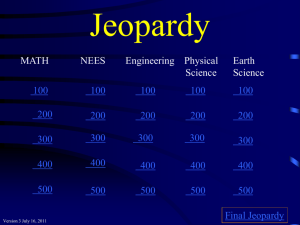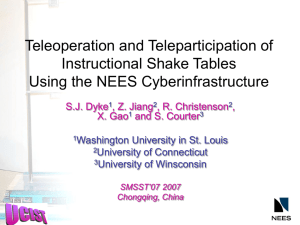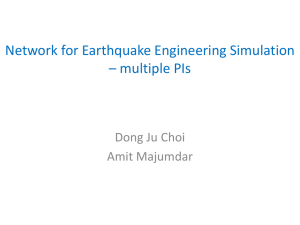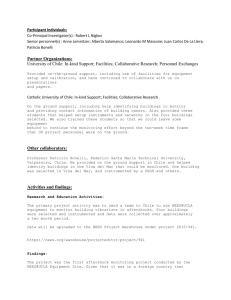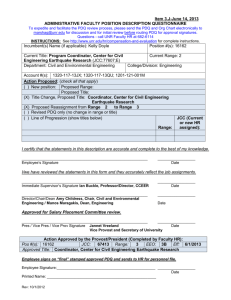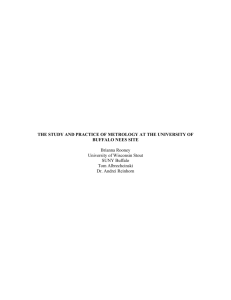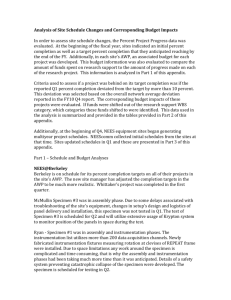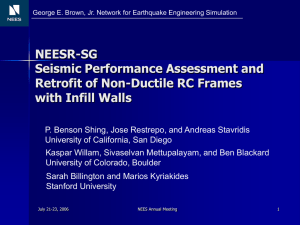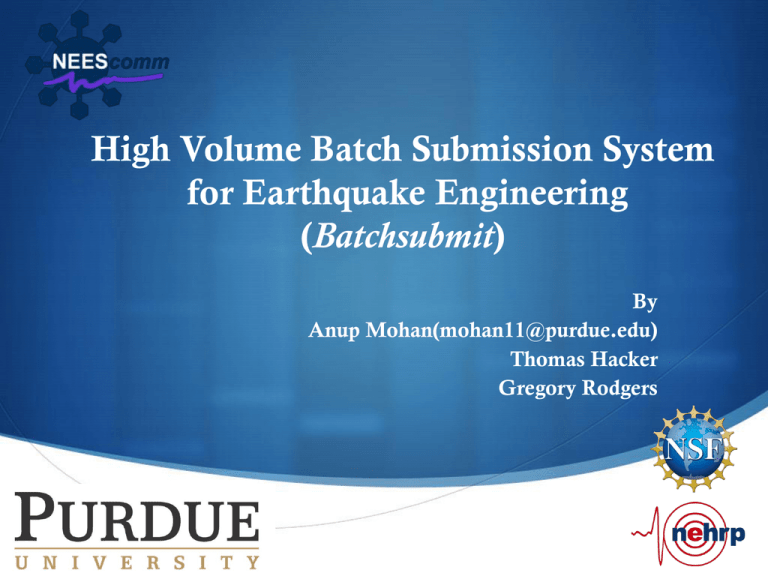
High Volume Batch Submission System
for Earthquake Engineering
(Batchsubmit)
By
Anup Mohan(mohan11@purdue.edu)
Thomas Hacker
Gregory Rodgers
Outline
Overview of NEES
Need for Batchsubmit
Batchsubmit Features
Batchsubmit Examples
Batchsubmit Architecture
Project Warehouse
Lessons Learned
NSF Network for
Earthquake Engineering
Simulation (NEES)
Safer buildings and civil infrastructure are needed to reduce
damage and loss from earthquakes and tsunamis
To facilitate research to improve seismic design of buildings
and civil infrastructure, the National Science Foundation
established NEES
NEES Objectives
Develop a national, multi-user, research infrastructure to
support research and innovation in earthquake and tsunami
loss reduction
Create an educated workforce in hazard mitigation
Conduct broader outreach and lifelong learning activities
Vision for NEES
Facilitate access to the world's best integrated network of state-of-
the art physical simulation facilities
Build a cyber-enabled community that shares ideas, data, and
computational tools and models.
Promote education and training for the next generation of
researchers and practitioners.
Cultivate partnerships with other organizations to disseminate
research results, leverage cyberinfrastructure, and reduce risk
by transferring results into practice.
NEES Research Facilities
NEES has a broad set of experimental facilities
Each type of equipment produces unique data
Located at 14 sites across the United States
Shake Table, Tsunami Wave Basin
Large-Scale Testing Facilities
Centrifuge, Field and Mobile Facilities
Large-Displacement Facility
Cyberinfrastructure
Oregon State University
University of California
Davis
University of Minnesota
University of Illinois- Urbana
University of California
Berkeley
https://www.nees.org
University of Buffalo
University of California
Santa Barbara
Cornell University
University of California
Los Angeles
Rensselaer Polytechnic Institute
0
University of California
San Diego
University of Nevada
Reno
University of Texas
Austin
Lehigh University
NEEShub (www.nees.org)
st
21
Century Science
Theory and Experiment
Computational Simulation
Third leg of science
Past 50 years or so
Data
Fourth “leg” of science
Researchers are flooded with data
Tremendous quantity and multiple scales of data
Difficult to collect, store, and manage
How can we distill meaningful knowledge from data?
Data is the
th
4
Paradigm
Producing an avalanche of high resolution digital data
All (or most) of the data needs to be accessible over a long
period of time
Much of the data is not reproducible
Example – NEES project
Structure or sample destroyed
through testing
Very expensive to
rebuild for more tests
Need for High Performance
Computing(HPC)
Simulation
Earthquake engineering problems:
Involves intense computation on large volumes of data
Will take days to complete simulation on normal computers
Earthquake engineering problems on an HPC resource takes hours to
complete
Using HPC resources for solving computationally intensive problems
results in huge time savings
Different HPC resources include:
XSEDE: Kraken, Stampede
Purdue: Hansen, Carter
Open Science Grid (OSG)
Why Batchsubmit?
Different steps of job submission on an HPC resource includes:
Login to the remote venue and copy all input files
Ensure that the simulation program is available on the remote venue
and copy program to the venue if necessary
Prepare venue specific script file specifying parameters for job
submission
Submit the job to the correct job class and wait for the result
Copy the results to a local system for analysis and visualization
Why Batchsubmit?
Repeating this process for multiple simulations is tedious and time
consuming
Batchsubmit automatically performs all the steps for submitting a job
in an HPC resource
User can submit jobs using batchsubmit to multiple venues
Batchsubmit will intimate the user when job finishes execution and all
results will be available in user job directory
Batchsubmit makes job submission easier and results in huge time
savings
Batchsubmit Features
Simple command line interface and GUI interface
Easy to do parallel processing
Asynchronous job submission
Select HPC resource(venue) to run the job
Send executables to the venue, if required
Batchsubmit Features
Automatic retrieval of results
Email notification once results are available
Monitor job status
Monitor queue traffic at different venues
Cancel a job
Batchsubmit Examples
batchsubmit date
batchsubmit
--venue carter --ncpus 16 OpenSeesMP
/apps/opensees/NEEShubExamples/SmallMP/Example.tcl
batchsubmit --venue stampede --ncpus 64
--appdir /apps/share64/opensees/stampede
--rcopyindir OpenSeesMP /LargeMP/Example.tcl
Architecture
Architecture:
Workspace
Architecture: Batchsubmit
Client
JOB STATUS =
PRESUBMIT
Architecture:
Batchsubmit Server
JOB STATUS =
SUBMIT
Architecture: HPC
Resource
JOB STATUS =
COMPLETE
Architecture:
Batchsubmit Server
JOB STATUS =
COMPLETE
Architecture:
Workspace
JOB STATUS =
COMPLETE
Accessing Batchsubmit
Workspace Tool
Linux Desktop in the browser
OpenSees Laboratory
Parallel Job Submission mode uses Batchsubmit
Project Warehouse
NEES online data repository
Allows researchers to upload, archive, and disseminate data from
their physical, cyber, and hybrid experiments and simulations.
Provides user with tools to organize data into projects, experiments,
trials, and results.
The data in the Project Warehouse can be cited and shared with
researchers across the world, or only within a research group.
Facility to curate the data in the repository to ensure the
long-term preservation of valuable NEES data.
Usage Statistics
Year
Month
2012
January
February
March
April
May
June
July
August
September
October
November
December
January
February
2013
Submitted Number of
Jobs
1453
1525
1466
1191
92461
18519
1849
4553
3341
6352
2712
3484
5260
2898
Lessons Learned
Need for community gateway
Selection of correct venue
Specifying correct walltime limit
Not exceeding the venue specific parameter limits
Need for data backup
Lessons Learned
Asynchronous method, hence email notifications are
necessary
Listing available venues
Showing how busy are the queues of different venues
Need for proper documentation and tutorials
Summary
Batchsubmit makes parallel job submission easy for the user
Batchsubmit is Asynchronous – does not require the session
to be alive till job finishes execution
Batchsubmit provides easy access to multiple
supercomputers.
Batchsubmit system could be easily extended for use by
other science and engineering domains.

